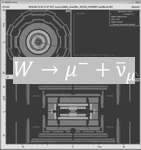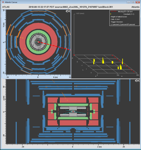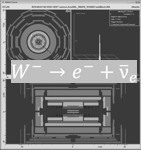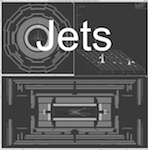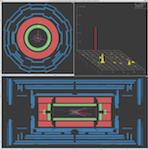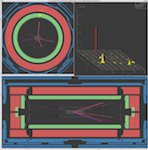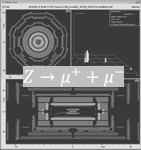Identifying Events with MINERVA
Here, you'll learn how the events mentioned before look in the event display MINERVA.
You will get to use your knowledge about identifying elementary particles.
You'll learn to choose events with a W particle as signal events and to distinguish them from the background events. Again, you'll find explanations about this in the form of a picture gallery.
Signal processes
-
 In the end view you can see the signature of an electron with high transverse momentum and a neutrino (Missing ET = 39 GeV) going in the opposite direction. In the side view you can also see the well-isolated electron.
In the end view you can see the signature of an electron with high transverse momentum and a neutrino (Missing ET = 39 GeV) going in the opposite direction. In the side view you can also see the well-isolated electron.
-
 The information from the lepton's track tell us that it is really an electron (pay attention to the negative sign of the electric charge.).
The information from the lepton's track tell us that it is really an electron (pay attention to the negative sign of the electric charge.).
Background processes
-
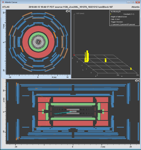 This event display shows the decay of a Z particle, which is the electric neutral messenger particle of the weak force.
The Z decayed immediately after creation into a muon and an anti-muon.
This event display shows the decay of a Z particle, which is the electric neutral messenger particle of the weak force.
The Z decayed immediately after creation into a muon and an anti-muon.
-
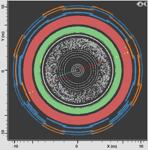 As you can see from this enlarged view into the direction of the proton beam muon and anti-muon going back to back.
Both particles might arise from one particle that decayed after its creation.
Furthermore there is no missing transverse momentum at all, meaning: A neutrino was probably not produced.
As you can see from this enlarged view into the direction of the proton beam muon and anti-muon going back to back.
Both particles might arise from one particle that decayed after its creation.
Furthermore there is no missing transverse momentum at all, meaning: A neutrino was probably not produced.
-
 Cross-checks are always better in order to proof the assumption that a Z particle was produced.
Both muons have distinct electric charges.
Cross-checks are always better in order to proof the assumption that a Z particle was produced.
Both muons have distinct electric charges.
